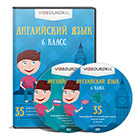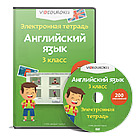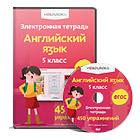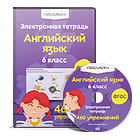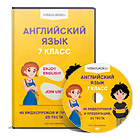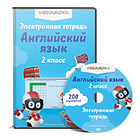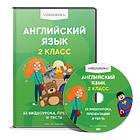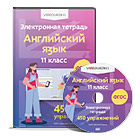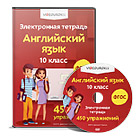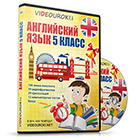| Long -term plan. Unit 8 “Natural Disasters” | School: №19 |
| Date: 20.04.18 | Teacher name: Berkingalieva Ardak Berkingalieva
|
| Grade 7 __ | Number present: | absent: |
| Lesson title: Typical natural disasters in Kazakhstan. |
| Learning objectives | 7.C9 use imagination to express thoughts, ideas, experiences and feelings. 7.S7 use appropriate subject-specific vocabulary and syntax to talk about a range of general topics, and some curricular topics. 7.L3 understand with some support most of the detail of an argument in extended talk on a limited range of general and curricular topics. |
| Lesson objectives | All learners will be able to: |
| Most learners will be able to: |
| Some learners will be able to: |
| Assessment criteria | using vocabulary during the speaking matching words with definitions identifying the information and find the solutions discuss the topic and answer the questions |
| Value links | Respect for yourself and others is achieved while pair discussion Universal Labor Society. (‘Mangilik Yel’,5) |
| Cross-curricular links | Geography and particularly Geography of Kazakhstan |
| Use of ICT | Active board for showing a presentation, playing the audio file |
| Previous learning | Learners have already studied the words for the topic natural disasters this term, so they know the types of natural disasters and other vocabulary. |
| Planned timings | Planned activities | Resources |
| Starter 2 min
min 7
| (W) Greeting - Good morning! Hope you feel fine now, because you had a good beginning of the day!
(W,I) Warm-up “Hot chair” Activity 1 One student will come to the center of the class and sit on the hot chair, other students will ask him/her questions reviewing vocabulary. And he/she must answer their questions very quickly. The aim of this activity to check students` previous knowledge. Today you will: Learn typical natural disasters in Kazakhstan; Listen to the talk about Natural disasters; Do comprehension tasks on listening; Create a warning sign for Natural disasters prevention;
|
PPP Slide1
|
| Middle
Min. 7
Min. 10
Min. 12
| (W,I) Listening Pre-listening Activity 2 Before listening learners receive cut cards with the words and their definitions in English then with Kazakh translations. Didactic material for learners.
| lightning | найзағай | | volcanic eruption | жанартау атқылауы | | flood | су тасқыны | | avalanche | қар көшкіні | | hurricane | дауыл | | drought | құрғақшылық | | explosion | жарылыс | | tornado | торнадо | | tarthquake | жер сілкінісі | | forest fire | орман өрті | | tsunami | цунами |
| lightning | a light that happens during a thunderstorm, very bright and fast | | volcanic eruption | lava, cinders, gases come up suddenly from below the earth surface through an opening of a mountain | | flood | coming of a great quantity of water over a place | | avalanche | a mass of snow, ice | | hurricane | violent and destructive storm over a small area | | drought | continuous dry weather, when there is not enough water for people’s needs | | explosion | a sudden burning of some combustible material | | tornado | a wind that blows and twirls round from the land to the top of the sky | | earthquake | sudden violent movement of the earth’s surface | | forest fire | an uncontrollable fire in an area of vegetation that happens in the countryside | | tsunami | a series of water waves caused by the displacement of a large volume of water | (I) While listening: Learners receive listening tasks; they are going to listen to two different talks about hurricanes and floods. Learners have questions to complete the table with answers and have options to complete the table. Learners listen to each track twice while taking notes and completing the table.. Listen to the talk and answer the questions about hurricanes and floods with options given:
| Scientists can track hurricanes, but they can’t stop them. | | Dams can reduce flood, listen to the warnings on the radio. | | Blow down houses, cause floods, disrupt traffic and affect ships. | | Over warm parts of the ocean. | | People can drown, lose houses and furniture. | | Some rivers in Bangladesh and India flood every year. | | Warm water evaporates from the sea and becomes a strong wind. | | Tropical storms with strong winds. | | If there is a lot of rain or very strong winds. | | When the water in rivers rises above its normal level and goes onto the land. |
Then they check each other or themselves from the slide Answer correctly to 8 out of 10 questions: (I,P,f) Post-listening: Activity 4 After listening learners in pairs discuss next questions, teacher makes sure they are aware about natural disasters in Kazakhstan: | № | Questions: | Hurricanes | Floods | | 1 | What are they?
|
|
| | 2 | Why do they happen? |
|
| | 3 | Where do they happen? |
|
| | 4 | How do they affect people? |
|
| | 5 | What can people do? |
|
| 1. What is the most dangerous type of natural disasters? Why do you think so? 2. What natural disaster can happen in place where you live? 3. Can you tell about any recent natural disaster happened in Kazakhstan or around the world? 4. What natural disaster may happen because of damaged environment? Teacher writes the assessment criteria on the board, learners work in pairs and assess each other’s speaking, providing necessary feedback to their partners. Assessment criteria for task: | Students name | | full answers
|
| | How many answers |
| | Score |
| Full answer 4 How many answer 4 Score 8
|
http://www.onestopenglish.com/clil/secondary/english-across-the-curriculum/topic-based-listening-lessons/environment-natural-disasters/551224.article
PPT slide 2
Appendix 1.
Appendix 2.
Slide 3
PPT slide 4
PPT slide 5
PPT slide 2 |
| End
Min 2
| Evaluation final Self- Assessment “WOW” Learners are given sticky papers to write their opinion on the lesson, they should write WOW
|
PPT slide 3
|
| End 1min | Feedback: Teacher asks learners what task was difficult to them and which pair worked well. |
|
| ADDITIONAL INFORMATION |
| Differentiation – how do you plan to give more support? How do you plan to challenge the more able learners?
| Assessment – how are you planning to check learners’ learning? | Health and safety check |
More support can be given at the start and in middle of lesson by providing less-able learners with story vocabulary in a word list so they can read examples of words seen or heard. More-able learners can be appraised with providing them a kind of creative work to express their opinions | |
|
| Reflection Were the lesson objectives/learning objectives realistic? What did the learners learn today? What was the learning atmosphere like? Did my planned differentiation work well? Did I stick to timings? What changes
| Use the space below to reflect on your lesson. Answer the most relevant questions from the box on the left about your lesson. |
| Summary evaluation What two things went really well (consider both teaching and learning)? 1: 2: What two things would have improved the lesson (consider both teaching and learning)? 1: 2:
|
| Lightning | A light that happens during a thunderstorm, very bright and fast |
| Volcanic eruption | Lava, cinders, gases come up suddenly from below the earth surface through an opening of a mountain |
| Flood | Coming of a great quantity of water over a place |
| Avalanche | A mass of snow, ice |
| Hurricane | Violent and destructive storm over a small area |
| Drought | Continuous dry weather, when there is not enough water for people’s needs |
| Explosion | A sudden burning of some combustible material |
| Landslide | A mass of snow, ice and rock that slides rapidly down the side of a mountain |
| Tornado | A wind that blows and twirls round from the land to the top of the sky |
| Earthquake | Sudden violent movement of the earth’s surface |
| Forest fire | An uncontrollable fire in an area of vegetation that happens in the countryside |
| Tsunami | A series of water waves caused by the displacement of a large volume of water |
